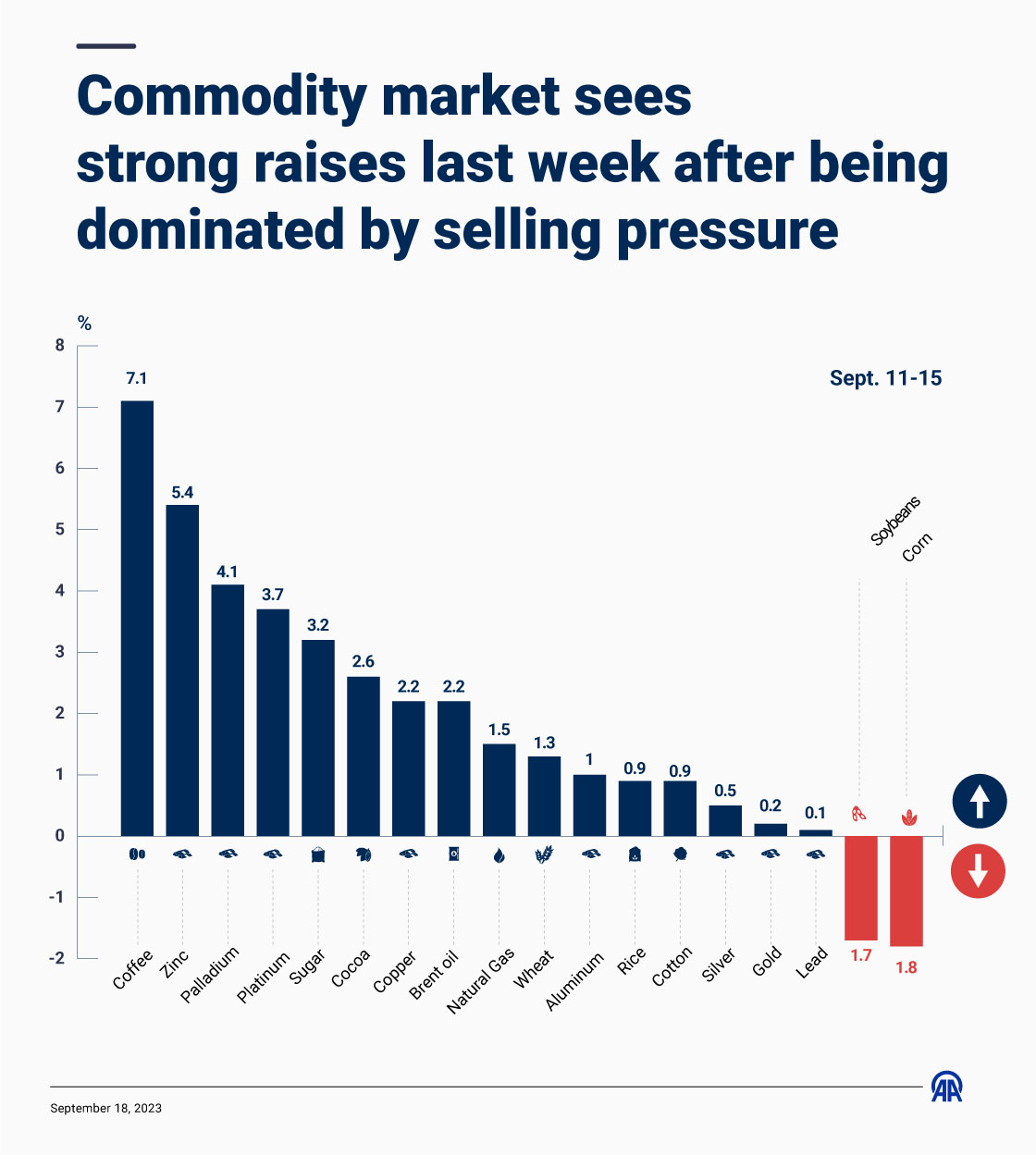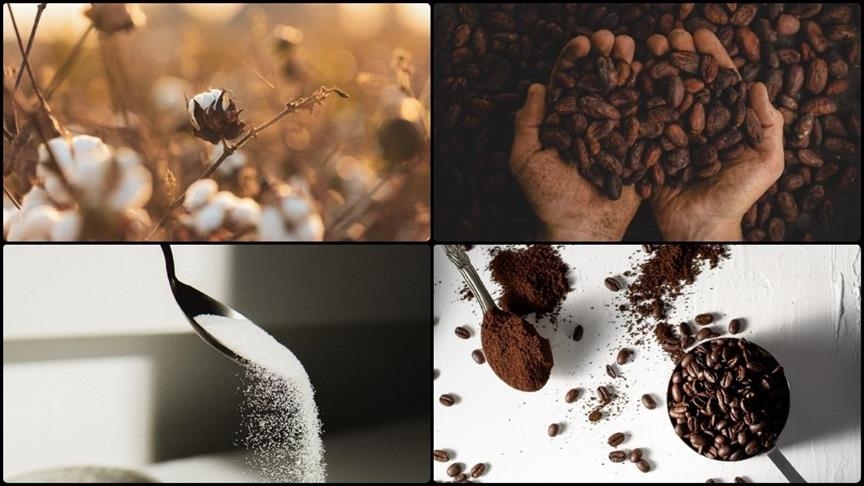ISTANBUL
International commodity markets rallied last week which was dominated by sales pressure, with analysts citing China’s central bank support as an important factor supporting the rises.
While the commodity market is experiencing high demand, there are still concerns over supply.
Analysts stated that the People’s Bank of China’s (PBoC) moves to support the economy were among the most important factors supporting the rise in the commodity market.
The PBoC cut the reserve requirement ratios of banks and credit institutions by 25 basis points, and the data released in China provided positive signals about economic activity, which increased the risk appetite.
The bank said in a statement that the decision aims to strengthen the foundation of economic recovery and provide sufficient cash to the market.
In China, industrial production and retail sales in August exceeded expectations, with annual increases of 4.5% and 4.6%, respectively, while the unemployment rate fell back to 5.2%.
The price of an ounce of gold rose after Asian central banks took measures to protect their currencies, completing the week with an increase of 0.2%.
Silver gained 0.5%, palladium 4.1%, and platinum 3.7%.
On the other hand, copper rose 2.2%, zinc 5.4%, lead 0.1%, and aluminum 1%, while nickel followed a flat course.

Energy commodities
Oil prices continue to trade at the highest levels of the year due to global supply concerns.
Last week, Brent oil gained 2.2%, while natural gas traded on the New York Mercantile Exchange rose 1.5%.
The price increase was driven by the continuation of cuts in the world’s largest oil producers Saudi Arabia and Russia in September, as well as negative developments in oil production in some producing countries.
Due to the storm in Libya, a member of the Organization of the Petroleum Exporting Countries (OPEC), four of its oil export terminals in the east of the country were closed.
Kazakhstan announced a reduction in daily oil production due to maintenance.
In its monthly report, OPEC stated that global oil demand will remain high, while production will remain low until the end of the year.
According to the global oil market report for August released by the International Energy Agency (IEA), the announcement of Saudi Arabia and Russia, the largest producers of the OPEC+ group, to extend the cut of about 1.3 million barrels per day until the end of the year, confronted the markets with a serious supply deficit.
Natural gas prices rose on concerns over supply shocks due to labor strikes in Australia.
LNG workers in Australia went on partial strikes after talks with management failed to reach an agreement.
Wheat gained 1.3% and rice 0.9%, while corn and soybeans fell 1.8% and 1.7%, respectively.
Analysts said wheat prices rose as world wheat production forecasts fell from the previous month.
According to the US Department of Agriculture’s (USDA) estimates for the 2023/24 season, wheat production estimates decreased by 3.3 million tons to 793.37 million tons compared to the previous month, while end-of-period stock estimates decreased by 920,000 to 265.61 million tons.
Corn prices depreciated as global corn production forecasts rose from the previous month.
Rise in coffee
Coffee prices rose 7.1% sugar 3.2%, cocoa 2.6%, and cotton 0.9%.
Sugar hit its highest level since Oct. 2011, and cocoa since March 2011.
Sugar production in India is expected to fall due to a dry August; increasing demand expectations also led to a rise in sugar.
Cocoa prices continued to rise on concerns that the El Nino weather conditions would negatively affect global cocoa production.
On the other hand, the Brazilian Ministry of Agriculture’s announcement that a mild cocoa mosaic virus (CaMMV) has been detected in the country’s orchards caused cocoa prices to rise.
The rise in coffee prices, on the other hand, was driven by a sharp decline in global production and increased demand for coffee beans in international markets.

